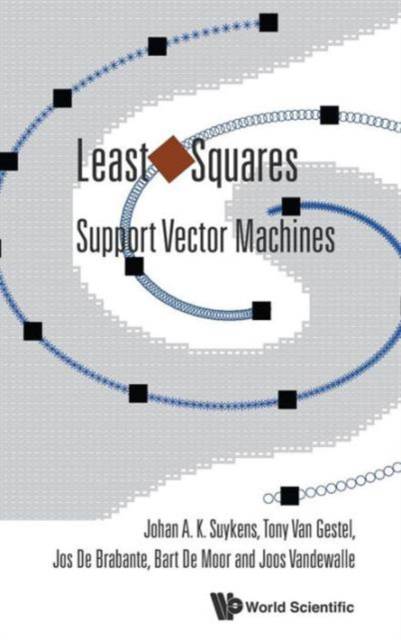
- Afhalen na 1 uur in een winkel met voorraad
- Gratis thuislevering in België vanaf € 30
- Ruim aanbod met 7 miljoen producten
- Afhalen na 1 uur in een winkel met voorraad
- Gratis thuislevering in België vanaf € 30
- Ruim aanbod met 7 miljoen producten
Zoeken
€ 172,45
+ 344 punten
Omschrijving
This book focuses on Least Squares Support Vector Machines (LS-SVMs) which are reformulations to standard SVMs. LS-SVMs are closely related to regularization networks and Gaussian processes but additionally emphasize and exploit primal-dual interpretations from optimization theory. The authors explain the natural links between LS-SVM classifiers and kernel Fisher discriminant analysis. Bayesian inference of LS-SVM models is discussed, together with methods for imposing sparseness and employing robust statistics.The framework is further extended towards unsupervised learning by considering PCA analysis and its kernel version as a one-class modelling problem. This leads to new primal-dual support vector machine formulations for kernel PCA and kernel CCA analysis. Furthermore, LS-SVM formulations are given for recurrent networks and control. In general, support vector machines may pose heavy computational challenges for large data sets. For this purpose, a method of fixed size LS-SVM is proposed where the estimation is done in the primal space in relation to a Nyström sampling with active selection of support vectors. The methods are illustrated with several examples.
Specificaties
Betrokkenen
- Auteur(s):
- Uitgeverij:
Inhoud
- Aantal bladzijden:
- 308
- Taal:
- Engels
Eigenschappen
- Productcode (EAN):
- 9789812381514
- Verschijningsdatum:
- 24/11/2002
- Uitvoering:
- Hardcover
- Formaat:
- Genaaid
- Afmetingen:
- 166 mm x 241 mm
- Gewicht:
- 557 g

Alleen bij Standaard Boekhandel
+ 344 punten op je klantenkaart van Standaard Boekhandel
Beoordelingen
We publiceren alleen reviews die voldoen aan de voorwaarden voor reviews. Bekijk onze voorwaarden voor reviews.











